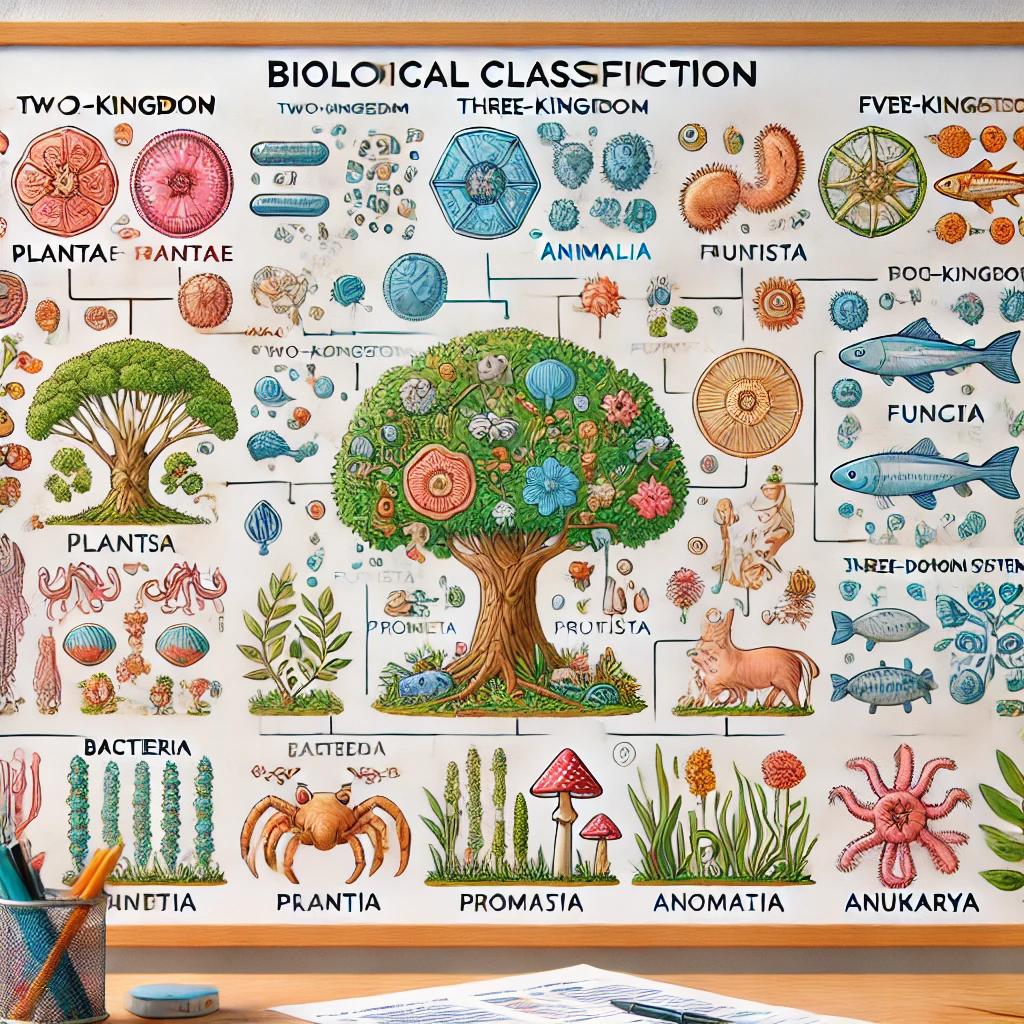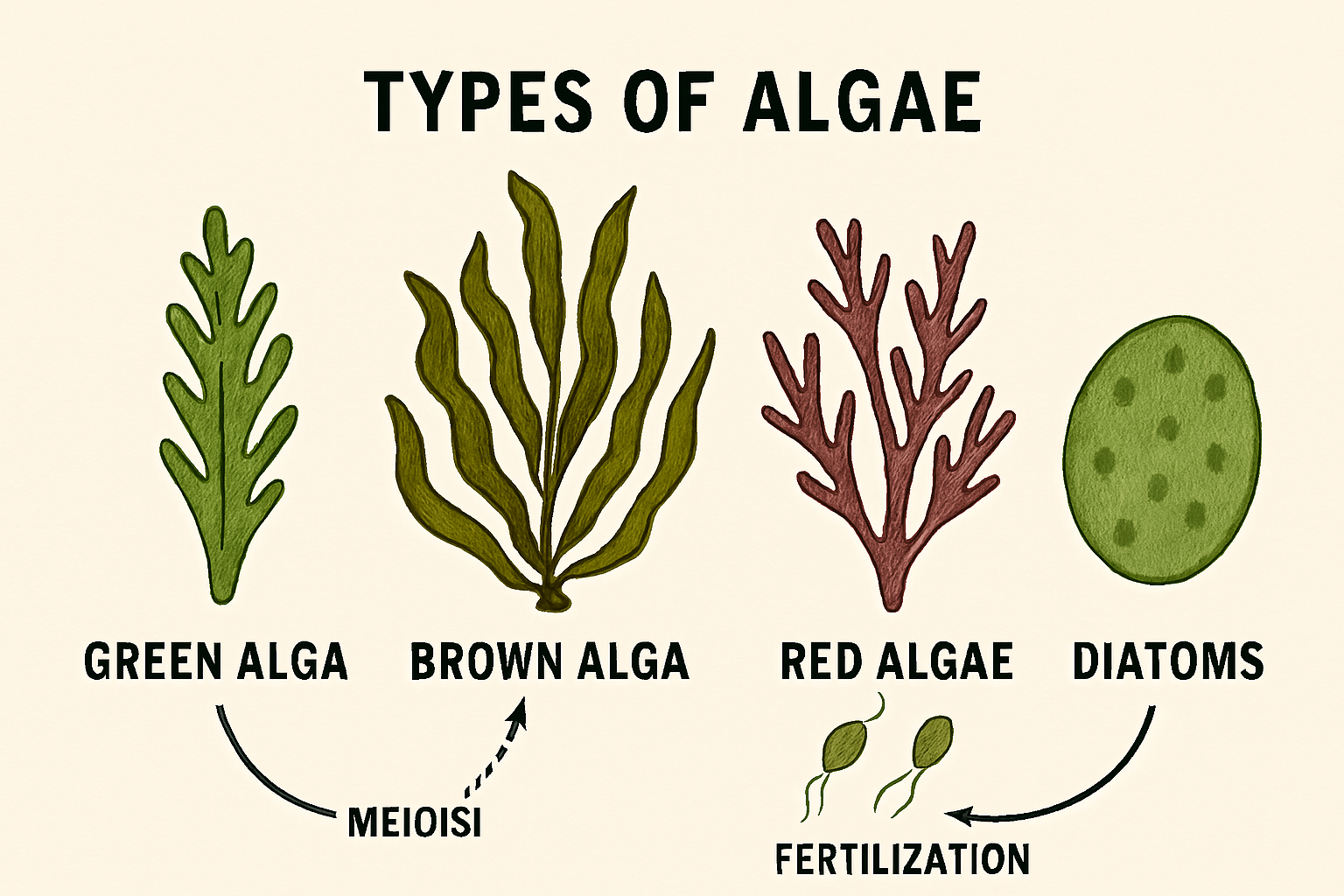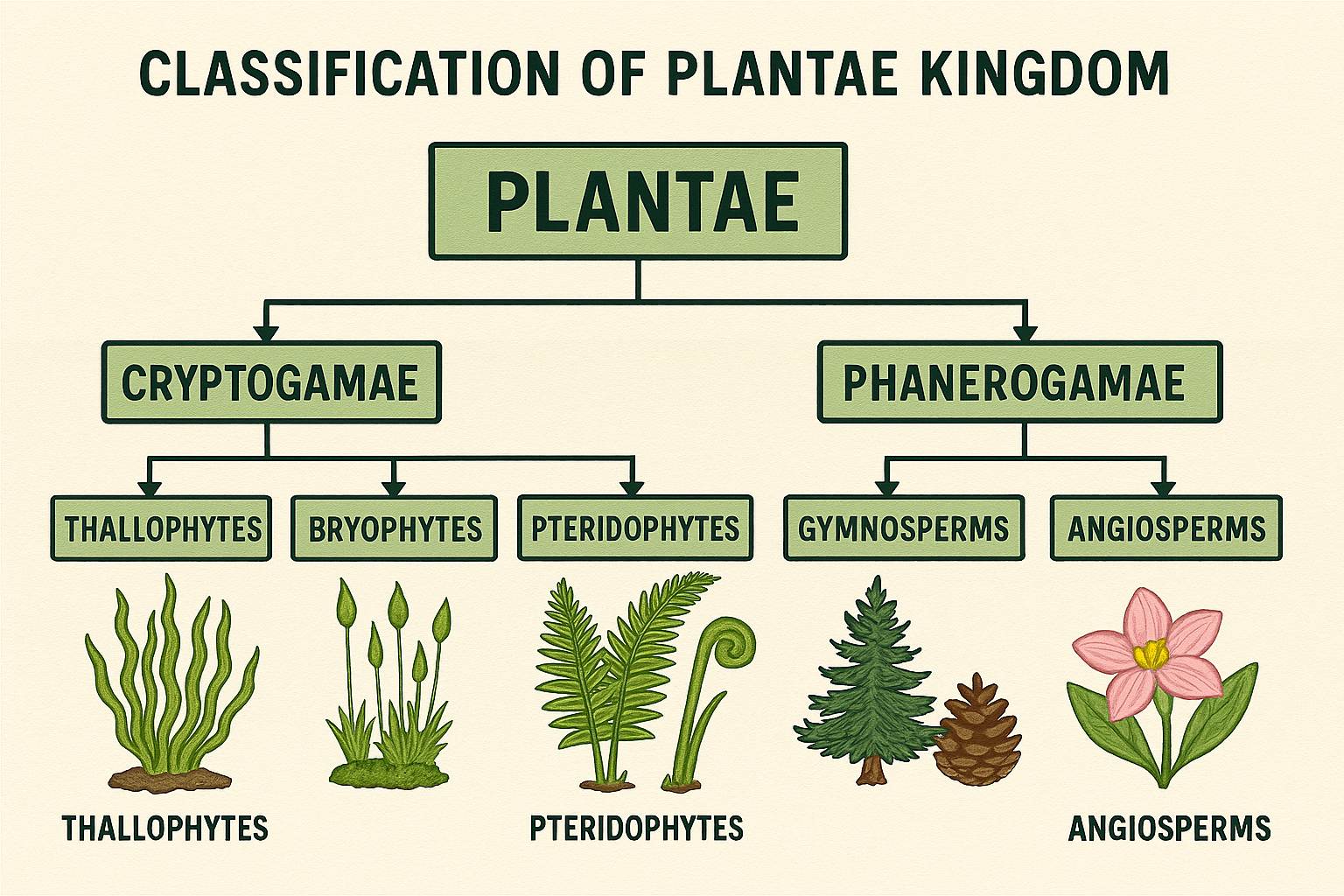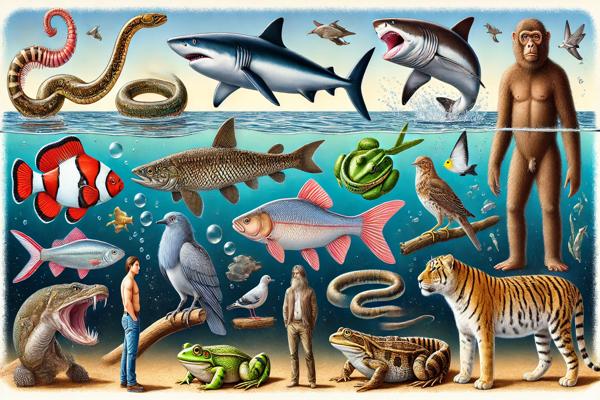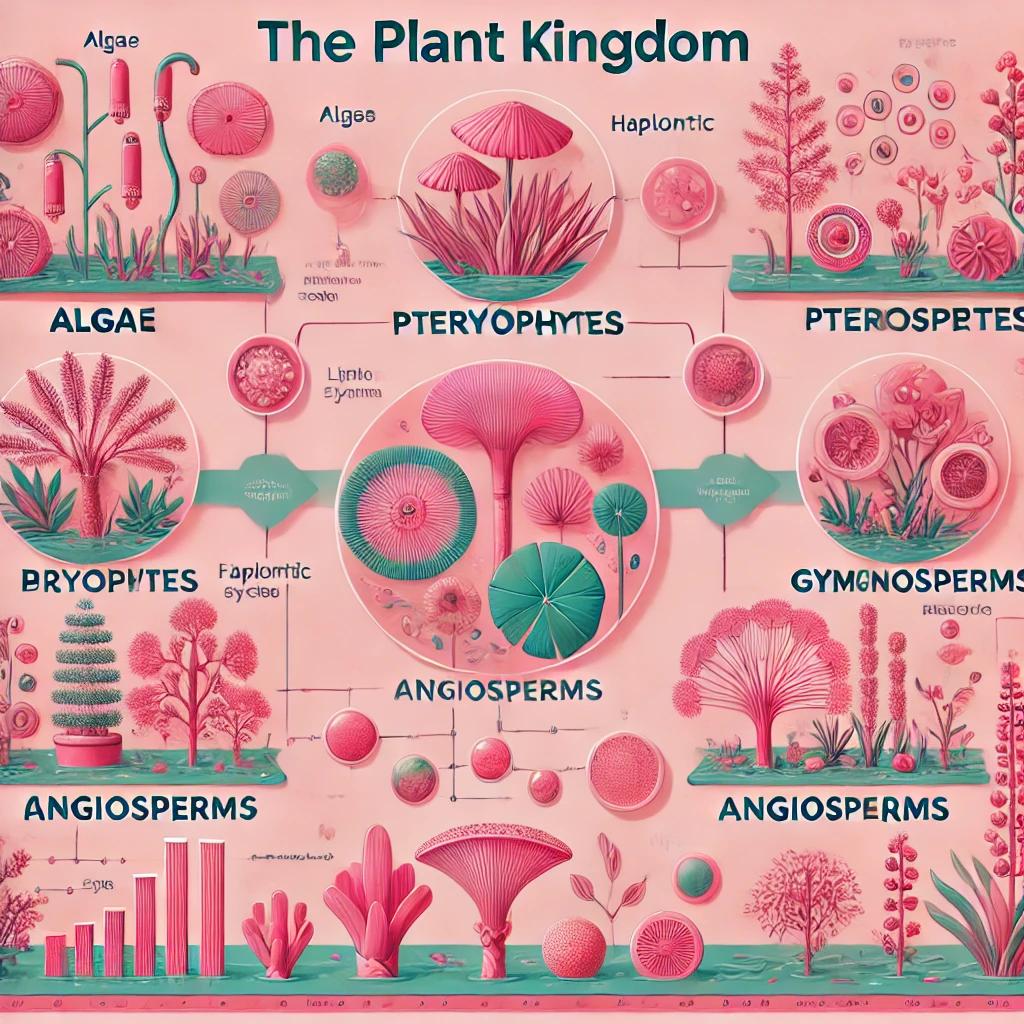Biological classification is the process of organizing living organisms into convenient categories based on shared characteristics. This system helps in understanding the relationships between organisms and provides a framework for studying biodiversity.
Two Kingdom Classification
The two-kingdom classification was the earliest system proposed by Carl Linnaeus. He divided organisms into two major groups:
- Plantae – Organisms that are autotrophic, have cell walls, and do not exhibit movement.
- Animalia – Organisms that are heterotrophic, lack cell walls, and are capable of movement.
Drawbacks of Two Kingdom Classification:
- Grouped both prokaryotes and eukaryotes together.
- Did not separate autotrophs and heterotrophs.
- Unicellular organisms were placed with multicellular organisms.
- Simple organisms were categorized alongside more complex ones.
Three Kingdom Classification
Proposed by Ernst Haeckel (1866), the three-kingdom system introduced a third kingdom to accommodate organisms that could not be classified as plants or animals.
Kingdoms:
- Plantae: Multicellular autotrophs with cell walls.
- Animalia: Multicellular heterotrophs without cell walls.
- Protista: Included all unicellular organisms such as bacteria, algae, and protozoans.
Drawbacks:
- No distinction between prokaryotes and eukaryotes.
- Lacked separation of unicellular eukaryotes and multicellular forms.
Four Kingdom Classification
Proposed by Herbert F. Copeland (1956), this system distinguished prokaryotes from eukaryotes and separated unicellular organisms further.
Kingdoms:
- Monera: Prokaryotic organisms (e.g., bacteria).
- Protista: Eukaryotic unicellular organisms (e.g., amoeba, diatoms).
- Plantae: Multicellular autotrophs (e.g., trees, algae).
- Animalia: Multicellular heterotrophs (e.g., humans, insects).
Significance:
- Addressed the prokaryote-eukaryote distinction.
- Recognized the diversity of microorganisms.
Limitations:
- Still grouped fungi with plants.
- Did not consider evolutionary relationships effectively.
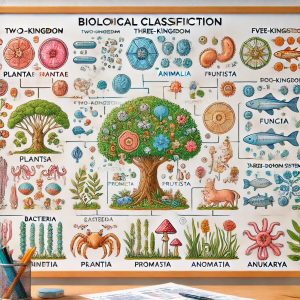
Biological classification
Five Kingdom Classification (Proposed by R.H. Whittaker, 1959)
This system addressed the shortcomings of the two-kingdom classification. The criteria for classification included:
- Complexity of cell structure: Prokaryotic vs. Eukaryotic.
- Body organization: Unicellular vs. Multicellular.
- Mode of nutrition: Autotrophic, heterotrophic, or holozoic.
- Lifestyle: Producers, consumers, or decomposers.
- Phylogenetic relationships: Evolutionary history.
The Five Kingdoms:
- Monera: Prokaryotic and unicellular organisms (e.g., bacteria).
- Protista: Eukaryotic and unicellular organisms (e.g., amoeba).
- Fungi: Multicellular eukaryotic organisms with a heterotrophic mode of nutrition (e.g., mushrooms).
- Plantae: Multicellular eukaryotes that are autotrophic (e.g., trees).
- Animalia: Multicellular eukaryotes that are heterotrophic and show locomotion (e.g., humans).
Three-Domain System
Proposed by Carl Woese (1990), the three-domain system revolutionized classification by using molecular studies, particularly RNA sequencing, to highlight evolutionary relationships.
Domains:
- Bacteria (Eubacteria):
- True bacteria.
- Prokaryotic organisms with peptidoglycan in cell walls.
- Example: Escherichia coli.
- Archaea (Archaebacteria):
- Prokaryotic organisms lacking peptidoglycan.
- Found in extreme environments (e.g., halophiles, thermoacidophiles, methanogens).
- Biochemically distinct from bacteria.
- Eukarya:
- Includes all eukaryotic organisms (Protista, Fungi, Plantae, and Animalia).
- Possess membrane-bound organelles.
Significance of Three-Domain System:
- Established Archaea as a separate group due to their unique biochemistry and genetics.
- Highlighted evolutionary differences at the molecular level.
Comparison of Biological Classification Systems
| System |
Criteria Used |
Kingdoms/Domains |
| Two-Kingdom (Linnaeus) |
Morphology, nutrition |
Plantae, Animalia |
| Three-Kingdom (Haeckel) |
Morphology, unicellularity |
Plantae, Animalia, Protista |
| Four-Kingdom (Copeland) |
Cell type (prokaryotic/eukaryotic) |
Monera, Protista, Plantae, Animalia |
| Five-Kingdom (Whittaker) |
Cell structure, body organization, nutrition |
Monera, Protista, Fungi, Plantae, Animalia |
| Three-Domain (Woese) |
Molecular phylogeny (RNA studies) |
Bacteria, Archaea, Eukarya |
These biological classifications show the gradual refinement of our understanding of life’s diversity, moving from simple morphological traits to sophisticated molecular techniques.
1. Kingdom Monera
Characteristics:
- Prokaryotic and unicellular.
- Found in a variety of habitats.
- Categorized based on shape:
- Coccus: Spherical.
- Bacillus: Rod-shaped.
- Vibrio: Comma-shaped.
- Spirillum: Spiral-shaped.
- Nutrition can be autotrophic or heterotrophic.
Groups under Monera:
- Archaebacteria: Found in extreme habitats (e.g., halophiles in saline areas, thermoacidophiles in hot springs, and methanogens in ruminants’ guts).
- Eubacteria: True bacteria with rigid cell walls.
- Autotrophic bacteria: Cyanobacteria (e.g., Nostoc, Anabaena) are photosynthetic.
- Chemosynthetic bacteria: Oxidize inorganic compounds (e.g., Nitrobacter).
- Heterotrophic bacteria: Decomposers and nitrogen fixers (e.g., Rhizobium).
- Mycoplasma: Smallest living organisms without a cell wall, often pathogenic.
2. Kingdom Protista
Characteristics:
- Eukaryotic and unicellular.
- Found in aquatic environments.
- Can reproduce sexually and asexually.
Major Groups:
- Chrysophytes: Diatoms and golden algae, photosynthetic and marine or freshwater.
- Dinoflagellates: Photosynthetic organisms with cellulose walls (e.g., Gonyaulax).
- Euglenoids: Photosynthetic in light but heterotrophic in darkness (e.g., Euglena).
- Slime Moulds: Saprophytic organisms forming a plasmodium.
- Protozoans: Heterotrophic organisms divided into groups such as amoeboids (e.g., Entamoeba), flagellates (e.g., Trypanosoma), ciliates (e.g., Paramecium), and sporozoans (e.g., Plasmodium).
3. Kingdom Fungi
Characteristics:
- Multicellular, eukaryotic, heterotrophic organisms.
- Found in warm and humid environments.
- Composed of thread-like structures called hyphae, forming a network known as mycelium.
- Reproduce by fragmentation, fission, budding, or spore formation.
- Include symbiotic relationships such as lichens and mycorrhizae.
Classes of Fungi:
- Phycomycetes: Found in aquatic habitats; reproduce via zoospores (e.g., Rhizopus).
- Ascomycetes: Also called sac fungi; produce ascospores (e.g., Penicillium).
- Basidiomycetes: Include mushrooms; reproduce sexually through basidia (e.g., Agaricus).
- Deuteromycetes: Imperfect fungi with only asexual reproduction (e.g., Alternaria).
4. Kingdom Plantae
- Multicellular autotrophs with diverse forms, ranging from algae to angiosperms.
- Divided into groups:
- Algae
- Bryophytes
- Pteridophytes
- Gymnosperms
- Angiosperms (Monocots and Dicots).
5. Kingdom Animalia
- Multicellular heterotrophs capable of locomotion.
- Nutrition is holozoic, saprophytic, or parasitic.
- Divided into:
- Invertebrates (9 phyla).
- Chordates (5 classes).
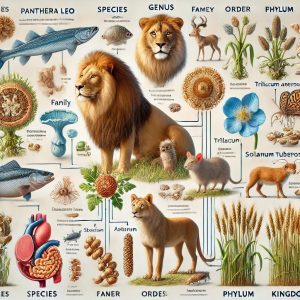
Comprehensive Overview of Biological Classification
Viruses, Viroids, and Lichens
- Viruses:
- Non-living outside a host but infectious within it.
- Composed of genetic material (DNA/RNA) and a protein coat.
- Plant viruses generally have RNA, while animal viruses may have DNA or RNA.
- Examples: Influenza, AIDS.
- Viroids:
- Smaller infectious agents discovered by T.O. Diener.
- Composed only of RNA and lack a protein coat.
- Cause diseases like potato spindle tuber disease.
- Lichens:
- Symbiotic association between algae (phycobiont) and fungi (mycobiont).
- Algae perform photosynthesis, providing food, while fungi offer protection and absorb nutrients.
This biological classification system enhances our understanding of the vast diversity of life forms and their evolutionary relationships.
